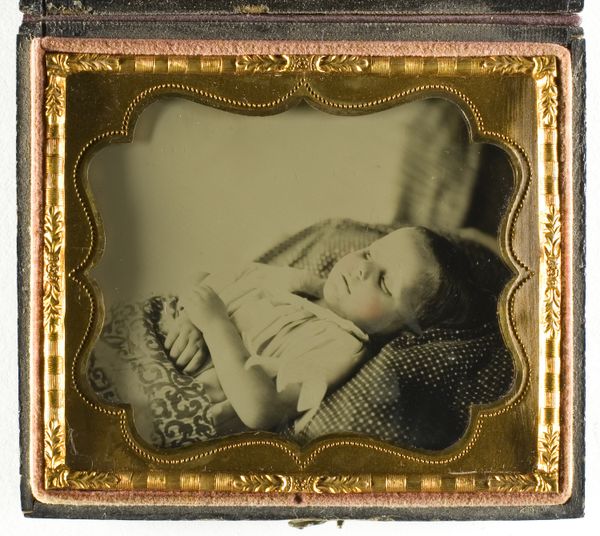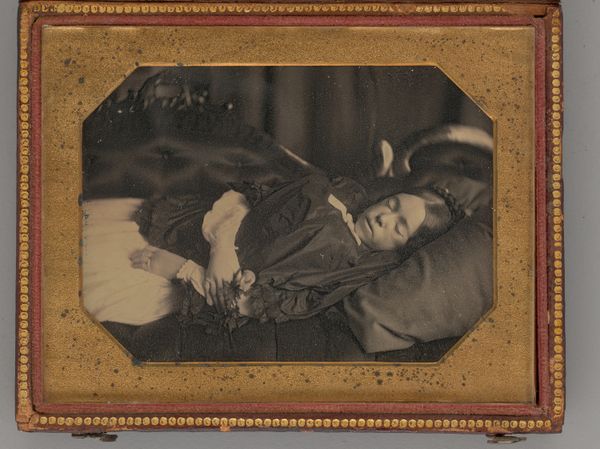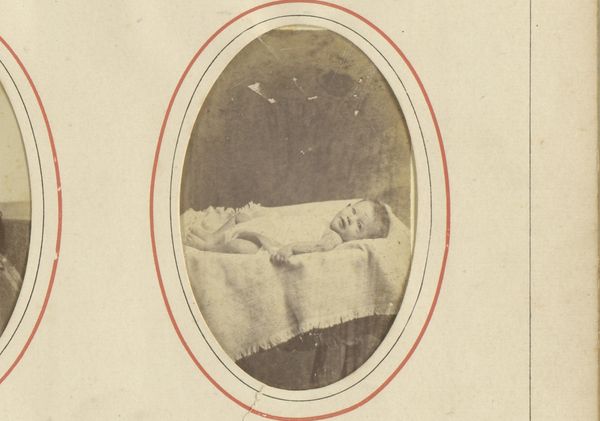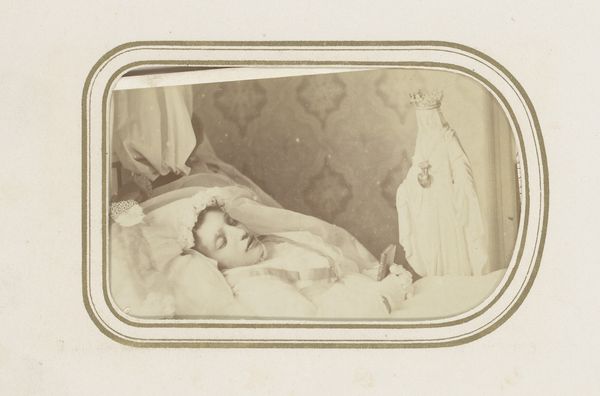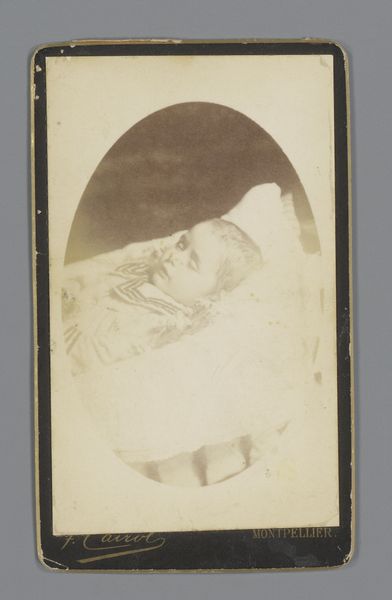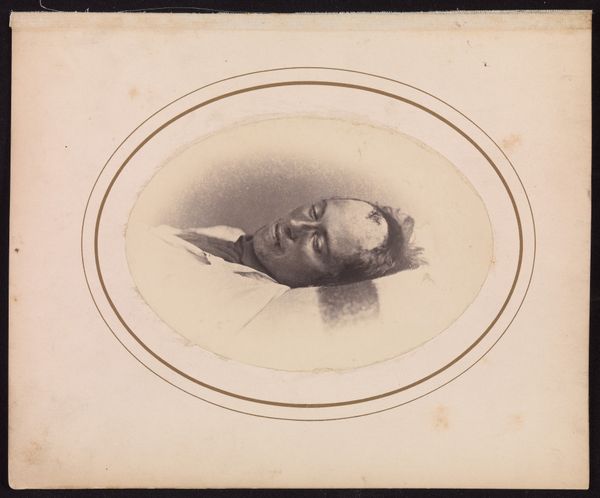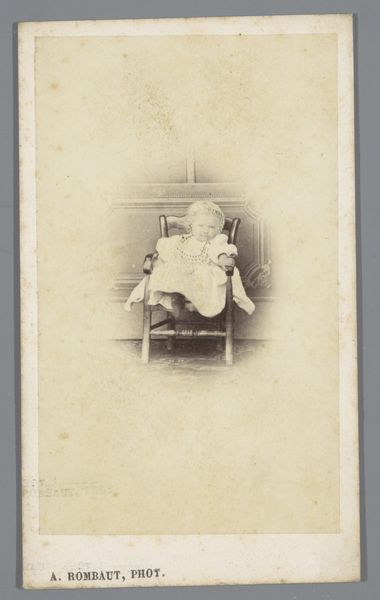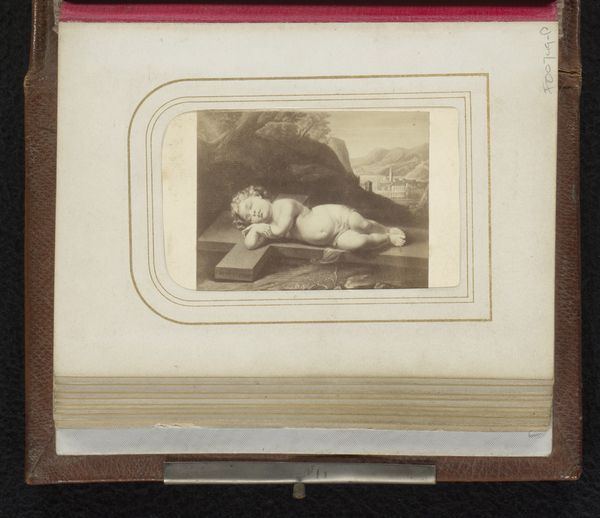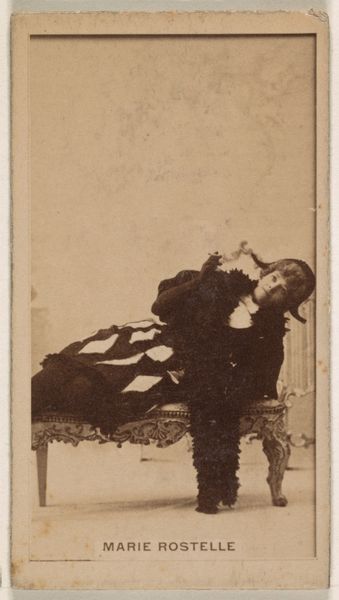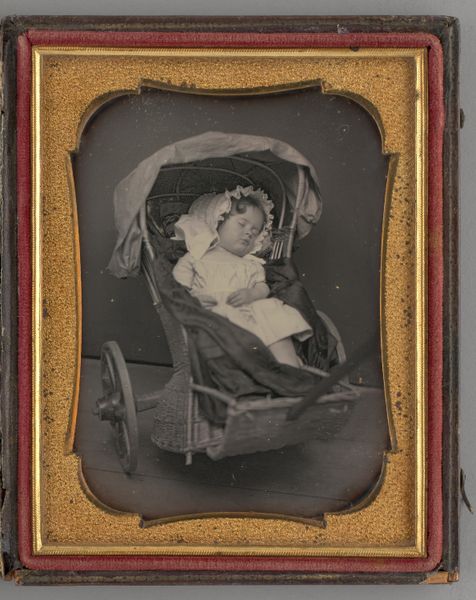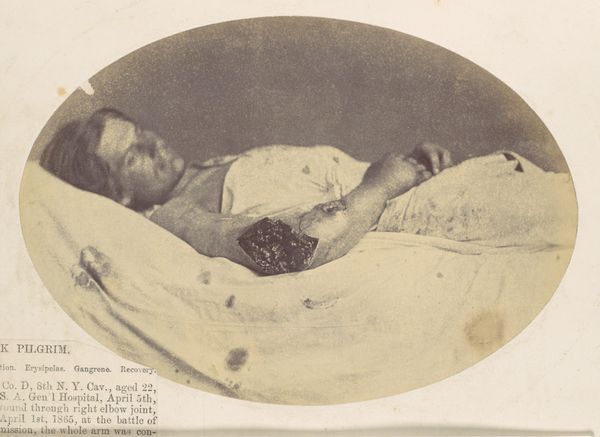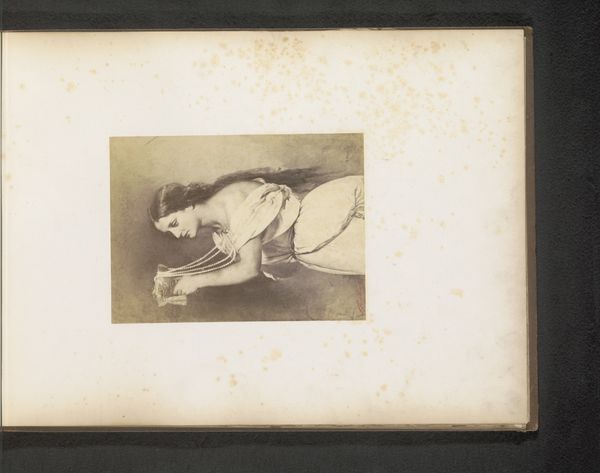
daguerreotype, photography
#
portrait
#
self-portrait
#
daguerreotype
#
photography
#
momento-mori
#
romanticism
Dimensions: height 55 mm, width 67 mm, height 92 mm, width 80 mm, thickness 13 mm
Copyright: Rijks Museum: Open Domain
This haunting image is a post-mortem portrait, likely of a woman named Mary Wheeler, made with the daguerreotype process. This photographic technique, popular in the mid-19th century, involved exposing a silver-plated copper sheet to light, then developing the image with mercury vapor. Notice how the daguerreotype’s reflective surface gives the image a sense of depth and almost ethereal presence. The sharpness of detail contrasts with the softness of the subject's features, giving a feeling of both intimacy and distance. The use of photography for memorial portraits reflects a democratization of art, making images accessible to a wider public. The labor-intensive nature of the daguerreotype process itself, from preparing the metal plate to the careful development, speaks to the value placed on preserving a lasting image of the deceased. Ultimately, understanding the materials and processes behind this image helps us appreciate its social and cultural significance.
Comments
No comments
Be the first to comment and join the conversation on the ultimate creative platform.
